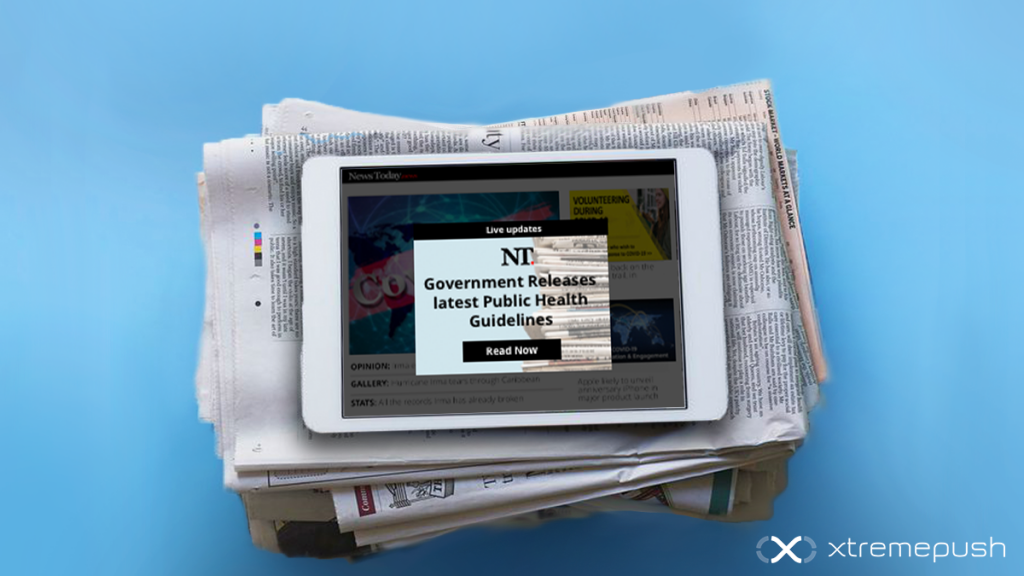None of us fully understand the full impact of COVID-19, from an economic or public health perspective. At this point, we can only guess at how long the pandemic is going to last.
But we are seeing signs of changes in consumer behaviour that may be here to stay long-term. This pandemic will likely permanently alter the way many of us interact, shop and experience content.
The world is moving online. Let’s face it, things were already heading that way, and those in publishing and media know this only too well. But the pace of this change has increased dramatically.
What is the size of the opportunity available?
So what kind of increases in reader and viewerships should we expect? Last week, CEO of Verizon Hans Vestberg reported a four-fold increase in data usage as a result of the public lockdown (either self-imposed or otherwise). Usage of streaming services went up by 12% and web traffic jumped 20%.
According to a recent report from Nielson, TV viewing figures are up by as much as 20% in two of the worst-affected countries, South Korea and Italy.
Interestingly, Vestberg says that social media figures stayed the same. Instinctively, you might think that surely can’t be right. But is it simply a sign that we have already reached peak consumption levels? As a society, maybe we just can’t spend any more time browsing Facebook, Twitter and Instagram than we already do.
All of this means that there is a bigger online audience to be won, provided you can connect with them.
Here are some of the trends and opportunities we’ve seen from our own clients in the digital publishing and media industry.
People want real news
Amidst the frustrating wash of misinformation and fear-mongering that has been doing the rounds, quality journalism and reporting has never been more important. There is a golden opportunity right now for respected publishers to really assert their value and win long-term readers.
But as all news professionals know, speed is the name of the game. There’s a lot of competition to be first to print with the latest news and updates, especially anything to do with the current pandemic.
We would recommend push notifications, available for both websites and mobile app, as a way to instantly share any new content you publish.
One of our longstanding clients RTE (Ireland’s national broadcaster) has been providing an outstanding level of service during this crisis, using real-time push notifications to share breaking news, government directives and public health advice within moments of the announcements being made.
Onboarding new readers
Make sure that you convert your new customers into loyal fans as quickly as possible.
For this reason, it’s important to build out an automated welcome series, designed to educate new subscribers and turn into them into active users of your digital platforms.
Content is now king and queen
The appetite for home entertainment has never been greater, and may never be again.
Last week, the US box office recorded zero revenue generated for the first time ever, as cinemas across the country went dark. And even in those regions where closures are not being mandated, people are largely following the advice of their governments and staying indoors.
This will prove to be a lucrative time for streaming services, obviously, but any online content creator should reap some benefits from the increased demand, whether that’s written or video.


Introducing paywalls and subscriptions
A significant reduction in ad spend is expected, with the current uncertainty prompting brands to cautiously tighten the purse-strings. CEO of the New York Times Company, Mark Thompson has forecast a 10% drop in digital advertising revenue.
You might already have seen evidence of this.
If that prediction holds true, and there are some who’d argue it’s a conservative estimate, then we will see more publishers pivot to a subscription, or at least partial subscription model, in the immediate term.
Promoting this paywalled content is crucial, yes, but the messaging has got to be personalised to really entice consumers. And you need to communicate the value of this new content, or justify why you’re now charging for content that was previously free.
From a delivery perspective, onsite and in-app messages would be perfect here. Campaigns can be built using dynamic content to change the wording depending on the page or video being viewed when the message is triggered. For example, if the reader was enjoying a sports article, the text and image should reflect that.
Once a customer has subscribed then it’s all about making sure they are seeing the value in it. Sending push notifications is a tried and tested tactic to get content in front of them and drive them onsite or in-app.
Taking down paywalls
Proof that there’s more than one way to peel an orange, we’ve also seen some publishers actually take down their paywalls! This isn’t limited to COVID-19 related content either.
While it may not be sustainable in the long term, it’s certainly a positive way to promote what you offer and add value to people’s lives right now.
And who knows how many of these consumers will be happy to pay in the future if they like what they see?
What’s next?
We’ll be sharing more tips and use cases over the coming weeks to help publishers and media brands connect with their customers. Keep an eye out for upcoming webinars too.
In the meantime, get in touch if you have some specific use cases you’d like to explore.
About Xtremepush
Xtremepush is a world-leading customer engagement, personalisation and data platform. It’s purpose-built for delivering mobile-first, multichannel customer experiences.
It enables businesses to acquire new customers and communicate more effectively with existing customers through automated, real-time and relevant messaging.
